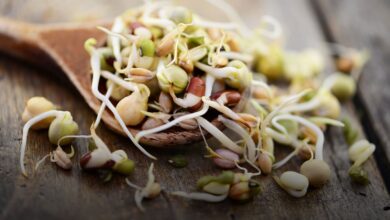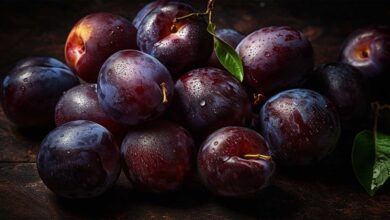Understanding free radicals and antioxidants

To understand what free radicals are, we must first understand the structure of atoms and molecules. We will then introduce the structure of free radicals, what different agents produce them and what damage they cause in our bodies.
We will then explain what antioxidants are, how they neutralize free radicals and how they can benefit our health and have an anti-aging effect.
Atoms
Matter is composed of atoms, such as magnesium (Mg), calcium (Ca), iron (Fe), carbon (C), oxygen (O) or hydrogen (H).
These atoms have a nucleus consisting of neutral particles and positively charged particles: protons.
This nucleus is surrounded by negatively charged electrons, which are constantly moving around the nucleus and thus forming an electron cloud. Through this electron cloud, atoms are represented by spheres of different colors: red for oxygen, dark gray for carbon, etc.…
Structurally, each type of atom has a nucleus of a certain size. For example, oxygen has a nucleus with 8 protons, while hydrogen has only one proton. The electrons in the electronic cloud are organized in layers.
Since the atom is neutral in terms of its charge, the number of electrons will be the same as the number of protons in the nucleus: 8 electrons for the oxygen atom and 1 electron for the hydrogen atom.
molecules
For atoms to be stable, each layer of the electron cloud must be complete. The first electron layer, which is the smallest and closest to the nucleus, must contain two electrons to be complete and stable. The next layers must be completed with 8 electrons for the atom to be stable.
The oxygen atom, which has 8 electrons, has 2 electrons in its first shell and 6 electrons in its second shell. Then it lacks two electrons in the surface layer to be stable.
Furthermore, the hydrogen atom, which has one electron, has only one electron in its first shell. Then it lacks one electron to be stable.
For this reason, these types of atoms will settle in the water molecule H2O (made up of two hydrogen atoms H and one oxygen atom O).
By combining in this molecule, each hydrogen atom shares an electron with the oxygen atom and the oxygen atom shares an electron with both hydrogen atoms.
This sharing of electrons, “lend me and I'll lend you,” allows each hydrogen to complete its first shell with 2 electrons and allows the oxygen to complete its second shell with 8 electrons.
In the H2O molecule, these three atoms find their electronic stability in these exchanges, and will remain strongly united through this sharing of electrons, which are strong bonds called covalent bonds.
The same applies to everything in matter: atoms must always find their electronic stability, and this is a complete and absolute imperative to their stability.
What are free radicals? Why do they cause cascading destruction at the cellular level?
Free radicals are atoms or groups of atoms that contain an unpaired electron. A free radical has a site that is missing an electron. This condition should not exist, because it interferes with the stability of matter.
Free radicals have a very high chemical reactivity. The latter are therefore very unstable, and when they travel through the body, they steal electrons from stable molecules.
Therefore, free radicals are very destructive. When they steal an electron, they will destroy cellular structures, such as our cell membranes or our DNA, for example.
Therefore, free radicals are the main cause of premature aging of our body.
Furthermore, once a free radical succeeds in stealing the electron it needs to complete its free state, the stable electron-donating molecule in turn becomes a free radical, because it finds itself with a missing electron. Thus begins a real chain reaction that destroys our cellular structures, like real chain bombs of our cells.
The origins of free radicals: our cellular metabolism
In our cells, we produce our energy in small compartments called mitochondria. In the final stage of cellular energy production, electrons pass through a respiratory chain and are finally accepted by a dioxygen molecule, to which H+ ions are added to form water.
We then say that oxygen is the final acceptor of electrons. This biochemical reaction of converting dioxygen into water is not 100% efficient, but inevitably leads to the production of free radicals, called reactive oxygen species, or ROS for reactive oxygen species.
Free radical production usually does not exceed 3 to 5% of oxygen-to-water conversions in the respiratory chain. But the more intense the cellular metabolism is, for example in cases of chronic diseases or in people with a high metabolism such as professional athletes, or people exposed to stress, the greater the production of free radicals of metabolic origin.
Specifically, when the body is in a state of nutritional ketosis as part of the ketogenic diet, the production of ketone bodies in the mitochondria greatly reduces the production of free radicals.(1). Although difficult to follow socially, this diet offers many benefits (anti-inflammatory and anti-aging).
Other sources of environmental free radicals
Added to this internal metabolic production are free radicals from the environment or linked to our lifestyle habits.
These external sources are smoking, exposure to ultraviolet radiation, or urban pollution.
These additional sources of free radicals will make a person need antioxidants even more.
What are antioxidants?
An antioxidant is a molecule that has the ability to donate an electron to a free radical while remaining stable. An antioxidant gives an electron to a free radical, thus neutralizing it, but the antioxidant itself does not become a free radical. Thus, the chain bomb reaction is stopped and the successive destruction of cellular structures ends.
Antioxidants are usually vitamins such as vitamin C or vitamin E.
These may include other molecules such as curcumin or beta-carotene which also have excellent antioxidant properties.
Also, on an internal level, our body also has antioxidant mechanisms, such as the enzyme glutathione peroxidase, which requires glutathione, the king of antioxidants, and selenium or coenzyme Q10 as cofactors.
As we mentioned here, antioxidant needs vary greatly from person to person depending on their health condition and level of physical activity, but also depending on whether they live in a city or not, depending on whether they are overexposed to UV rays, sun exposure or He suffers from smoking.
When the level of free radicals in our bodies is greater than the capacity of antioxidants, or the homeostasis, or homeostasis, is broken, we then talk about oxidative stress.
In the fight against oxidative stress, nutritional supplements are very important, because they provide antioxidants without taking in the calories in food. It is therefore possible to increase antioxidant capabilities without the need to increase energy consumption.
On the same topic
Understanding free radicals and antioxidants


